|
Hawaiian ecosystems are under dire threat from numerous invasive species, brought to the islands by humans. The animals listed below are just a prominent few that are displacing unique and treasured native plants and animals from their habitat. For notable plants disrupting the ecosystem, see the Invasive Plants page.
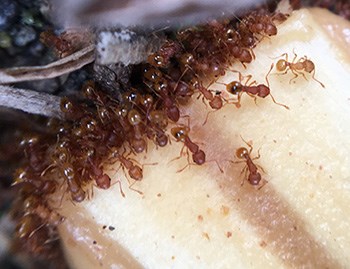
Little Fire AntsLittle fire ants, also known as LFA, may only be 1/16th of an inch, but they are having a large impact on the Hawaiian islands. These stinging ants come from Central and South America, but arrived on Hawaiʻi Island in the late 1990s. They were likely introduced on potted plants, but can also travel on vehicles, construction equipment, and camping gear. They can be found on the ground and in vegetation, and will easily fall from trees when disturbed. Their stings leave welts that last for approximately two weeks. There have been cases of serious injury from LFA stings, including blindness and anaphylactic shock. 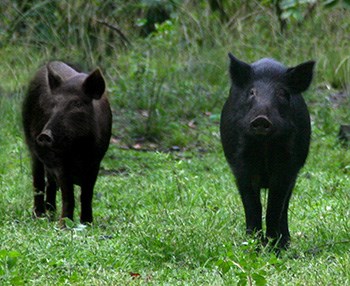
PigsPigs have been connected to Hawaiian culture and history since before the Polynesians first arrived on the islands. Culturally, pigs are connected to the god Kamapuaʻa and the ʻamaʻu fern. Historically, the pig was one of the first animals introduced to Hawaiʻi by humans. It was a small variety of pig and typically kept in enclosures within settlements. Captain Cook came to the islands in 1778 and brought with him the European pig. Larger and more aggressive than the Polynesian pig, European pigs roamed free and created more damage to the environment. Pigs seen today are descendants of the European stock.Pigs are found throughout the islands, predominantly in wet forests. They eat many native and invasive plant species. This reduced the number of native species and dispersed many invasive species. Pigs also root the ground and push over native tree ferns to eat the interior, which results in pools of standing water. These pools are the perfect breeding ground for invasive mosquitoes. The insect is a vector for malaria, a disease decimating native bird populations. Control methods consist of removal and the use of fences and cattle guards. Fencing is an expensive and time consuming control method, costing upwards of $35,000 per mile. Cattle guards prevent pigs from crossing roads. 
Coqui FrogsWhile some find the call of the coqui comforting and pleasing to the ear, others find the sound to be an alarming warning about the state of Hawaiian forests. Coqui frogs drown out the native nocturnal species calls with their own. This changes the nighttime soundscape and hinders the survival and reproduction of native species. Coqui frogs also eat many native insects, which negatively affects the rest of the ecosystem.Coqui frogs originate from Puerto Rico and were introduced to the Hawaiian Islands in the 1980s via potted plants. They are highly adaptable and rapidly reproduce. This has resulted in their quick spread from lower elevations to higher elevation areas. A common control method consists of spraying these small frogs with a citric acid solution. This method is not effective on a larger scale and coqui frogs continue to spread. Listen to a National Park Service podcast episode about "The Coquistador" 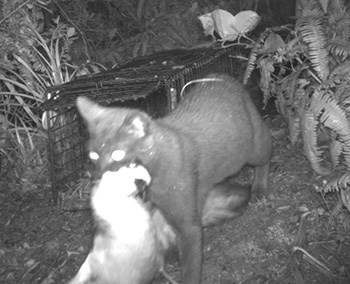
CatsDomesticated cats were introduced to Hawaii by Europeans in 1788. Cats are highly adaptive and quickly become feral once in the wild, even when previously a house pet. Feral cats tend to be larger and more aggressive than the typical house cat. They have had a major impact on many bird species and have contributed to the extinction of 33 native bird species. There are few effective control methods for cat populations. Some control methods include desexing, trapping, and the use of toxicants. Keeping pet cats indoors and if unwanted, bringing them to a shelter also helps protect native species from predation.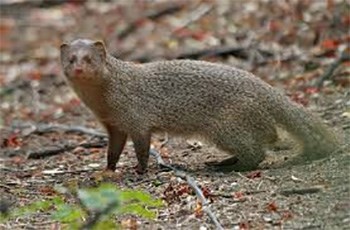
MongoosesIf you see a small, tan animal running across the road or through vegetation, it is likely a mongoose. They were introduced in the 1880s to control rat populations in sugarcane fields. The attempts were unsuccessful due to the significant oversight that rats are nocturnal, while mongooses are typically diurnal. Instead of decreasing rat populations, mongooses devastated the native bird populations. They are especially dangerous to ground nesting species, such as the threatened nēnē. Mongooses are found throughout the island, predominantly in higher elevations. Control methods include trapping and the use of anticoagulant toxicants, both of which are most effective in areas with high bird populations. 
Kalij PheasantsCommonly seen throughout the park, kalij pheasants are a game bird that originates from Asia. In 1962, game farms introduced these birds to Hawaii. They were soon considered a game bird in Hawaii due to their rapid population growth. As the birds distribute seeds, their propogation increased the spread of invasive plants such as banana poka, thimbleberry, and guava. It also introduced new diseases, such as malaria, to native birds. The scratching they create while foraging is sometimes mistaken for rooting by pigs, but is less desructive.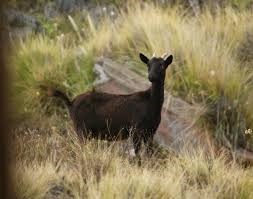
GoatsWith the arrival of Captain James Cook also came the arrival of a major invasive species: goats. In 1778, both arrived on the Hawaiian islands and have left a lasting impact. Goats have devastated native plants such as silverswords, naupaka, and koa. Invasive grasses were also introduced to support the production of goats for hunting and farming. Major erosion issues have occured in areas cleared by goats. Control methods did not begin until 1916, which is when the Park was founded. Park personnel and contract hunters were used to reduce goat populations within the Park. Goats were predominantly found in mid-elevation and coastal lowland areas. Fences were put up not only to protect areas from goats, but also to contain goats for the hunting efforts. Very few goats can now be found within the park due to control efforts. |
Last updated: February 18, 2021
